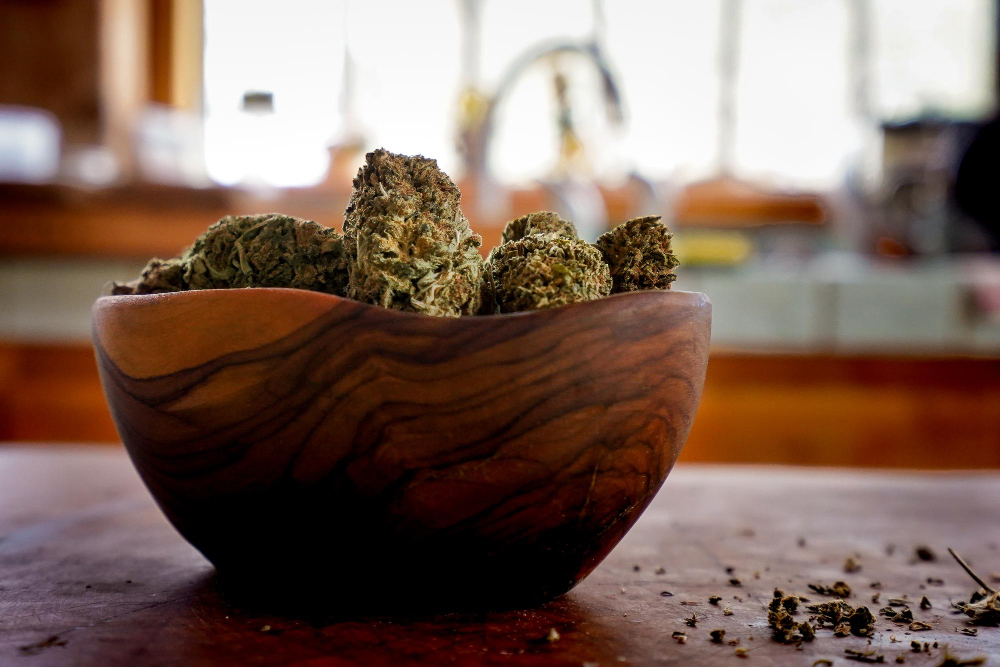The cannabis industry is evolving at an unprecedented pace, with technological advancements reshaping how consumers interact with and consume cannabis products.
Among these developments, cannabis edibles have emerged as a sophisticated and diverse market segment. This guide delves into the latest trends in cannabis edibles, highlighting innovations and consumer preferences defining the current landscape.

Post Contents
Precision Dosing and Lab Testing
As the cannabis industry matures, consumer demand for reliability and consistency in edibles has led to significant advancements in precision dosing and lab testing. These technological innovations ensure that each edible product delivers a predictable and consistent experience.
- Precision Dosing Technology: Manufacturers are utilizing advanced technologies to measure and distribute THC and CBD content in edibles accurately. This includes micro-dosing options, where products contain a minimal amount of cannabinoids, suitable for beginners or those seeking mild effects without a strong psychoactive experience. Precision dosing allows consumers to tailor their consumption according to their tolerance and desired effect, promoting a safer and more personalized experience.
- Enhanced Lab Testing: Rigorous lab testing has become a cornerstone of the cannabis edibles industry, with state-of-the-art facilities conducting comprehensive analyses. These tests not only confirm cannabinoid levels but also screen for contaminants such as pesticides, heavy metals, and residual solvents. This transparency reassures consumers about the safety and quality of their products, fostering trust and reliability within the market.
Novel Consumption Methods and Form Factors
Innovation in consumption methods and the form factors of edibles are expanding the market’s appeal and accessibility. The variety available caters to a broad spectrum of preferences and use cases, from traditional brownies to more discreet options.
Among these, gummies remain a perennial favorite, evolving far beyond their initial offerings. Today, the best weed gummies on the market boast delicious flavors and incorporate precise dosing and quality ingredients, appealing to consumers looking for both taste and efficacy. Particularly popular are those infused with full-spectrum extracts, offering a comprehensive experience by retaining the plant’s natural cannabinoids and terpenes
- Innovative Edibles: The industry has moved beyond the classic cookies and gummies to offer sophisticated products. This includes everything from THC-infused beverages, dissolvable sublingual strips, and even savory snacks. These novel form factors appeal to consumers seeking convenience, discretion, and new experiences. Particularly popular are water-soluble cannabinoid formulations, which offer faster onset times compared to traditional edibles, enhancing their appeal for both medicinal and recreational users.
- Health-Conscious Options: There’s a growing trend towards health-conscious cannabis edibles, reflecting broader nutritional preferences. This includes gluten-free, vegan, and sugar-free options, products enriched with superfoods and additional supplements such as vitamins, minerals, and adaptogens. These products cater to a health-minded audience who seeks the benefits of cannabinoids without compromising their dietary choices.
Integration of Technology in Production and Distribution
The production and distribution of cannabis edibles have seen significant advancements thanks to the integration of technology. This has not only streamlined operations but also enhanced the overall consumer experience.
- Automation in Manufacturing: Automation technology is revolutionizing the production of cannabis edibles, making the process more efficient and consistent. High-tech equipment for mixing, dosing, and packaging reduces human error and ensures uniformity in product quality. This automation also enables manufacturers to meet growing demand while adhering to strict regulatory requirements.
- Blockchain for Traceability: Blockchain technology is being adopted to improve traceability and transparency in the edible supply chain. By providing a tamper-proof record of the product’s journey from seed to sale, consumers can verify the authenticity and quality of their purchases. This technology also aids regulatory bodies in monitoring compliance and prevents the circulation of counterfeit products.
Conclusion
The latest trends in cannabis edibles highlight a dynamic and rapidly evolving industry at the intersection of technology, consumer preferences, and regulatory landscapes.
Precision dosing, lab testing, novel consumption methods, and the integration of advanced technologies in production and distribution are shaping a future where cannabis edibles are safe, accessible, and tailored to meet the diverse needs of consumers. As the industry continues to innovate, these trends will likely serve as the foundation for new developments, further enriching the consumer experience and expanding the market’s potential.